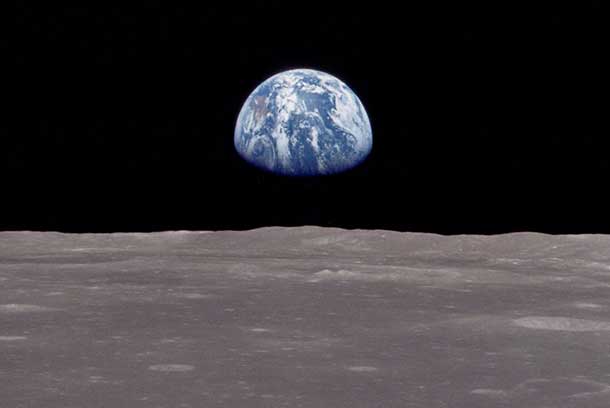What is the Moon?
THUNDER BAY – NATION-TECH – The Moon is the brightest object we see in the night sky. It’s not a star, but our Earth’s only natural satellite, which means it moves around the Earth just like the Earth moves around the Sun. It’s the closest celestial body to us, but it’s still about 238,855 miles away. That’s so far that you could fit 30 Earths between us and the Moon!
The Moon’s Changing Face
Have you ever noticed that the Moon looks different on different nights? Sometimes it’s a thin crescent, sometimes it’s half a circle, and sometimes it’s a full, bright circle. These different shapes are called “phases,” and they change as the Moon moves around the Earth, showing us different amounts of its lit-up side.
A Journey to the Moon: The Apollo 11 Mission
Long ago, humans could only look at the Moon and dream about what it might be like to visit. But in 1969, that dream came true when astronauts Neil Armstrong and Buzz Aldrin became the first humans to walk on the Moon as part of the Apollo 11 mission.
They landed their spacecraft, called the “Eagle,” in an area of the Moon called the Sea of Tranquility. Neil Armstrong famously said, “That’s one small step for man, one giant leap for mankind” as he stepped onto the lunar surface. They planted the American flag, collected Moon rocks, and then returned safely to Earth.
Stories and Legends about the Moon
For thousands of years, people have been telling stories about the Moon. Different cultures have different moon tales. Some people see a “man in the moon” in the dark and light patches, while others see a rabbit.
In Chinese mythology, there’s a story about a goddess named Chang’e who lives on the Moon with a rabbit. In Native American legends, the Moon is often seen as a protector or a symbol of love and family.
There’s also a fun, but not true, story about the Moon being made of green cheese! Scientists have proved this isn’t true, especially after studying the Moon rocks brought back by the Apollo astronauts.
The Importance of the Moon in Traditional Indigenous Culture
The Moon holds a position of significant importance in North American Indigenous cultures. These cultures live in close symbiosis with nature, respecting all life forms and seeking to coexist harmoniously with them. The Moon, alongside the stars, carries special significance in this regard1.
Indigenous peoples used the Moon as a means of telling time, counting from one new moon to the next in what is known as a lunar cycle. Each month was associated with a name for the Moon, serving as a way to keep track of the seasons and providing symbolic value for the Indigenous communities. Each name reflects what the Moon represented to them in their daily lives and was indicative of its guidance and influence.
For example, in December, the full moon is known as “The Cold Moon” or the “Full Long Nights Moon,” marking the period when the nights are longest and the days coldest. In January, the “Wolf Moon” signifies the time when wolves would howl hungrily outside villages during the cold nights. The “Snow Moon” in February denotes a time when heavy snowfalls made hunting difficult, often leading to periods of hunger for both humans and animals.
As winter ends, the March full moon, known as the “Crow Moon,” symbolizes the departure of cold weather, with the crow’s caw seen as bidding farewell to winter. This moon is also called the “Worm Moon,” as birds begin to catch worms during this time. The “Egg Moon” in April represents the rebirth and renewal of nature, while the May full moon, fittingly named the “Flower Moon,” marks a time when it was believed that flowers would dance at night in honor of the moon.
The June full moon is referred to as the “Strawberry Moon” because it coincides with the strawberry harvesting season. The July full moon, the “Thunder Moon,” marks a period of frequent thunderstorms and the time when buck deer start forming their antlers. The “Red Moon” of August is named so because the moon appears large and reddish, reflecting the sun’s rays even at night.
Autumn also brings distinct names for the full moons. The September full moon is known as the “Harvest Moon,” signifying the time most crops are harvested. The October full moon, the “Hunters Moon,” is named for the time when foliage is fully grown and deer are plentiful and slower to move. November’s full moon is called the “Beaver Moon,” named after the peak season for beavers, during which traps were set to catch them.
The Moon’s Influence on Earth
The Moon doesn’t just give us a pretty light at night. It also affects the Earth in important ways. It helps create the tides in the ocean, and some animals, like sea turtles and certain birds, use the light of the Moon to navigate.
Final Thoughts: Our Special Connection to the Moon
The Moon is a special part of our lives. It lights up our night sky, influences our planet, and has been a source of wonder and inspiration for centuries. And just think – humans have walked on the Moon! Who knows? Maybe one day, you might too.
So next time you see the Moon, remember how much there is to know about our closest celestial neighbour. Keep asking questions, keep exploring, and keep reaching for the Moon.

